The Talbot Trail in Sudbury
The Talbot Trail is a series of 14 statues around Sudbury that depict various fascinating episodes in the town’s history over the centuries. The trail is an excellent way to navigate your way around Sudbury with many of the town’s ancient natural, historical and architectural gems to enjoy on route.
Come and explore Sudbury via The Talbot Trail.
You’ll find the first statue ‘The Town Gaol’ and the beginning of The Talbot Trail behind Sudbury Town Hall, in Gaol Lane, located near the impressive Victorian doorway that forms the entrance to Sudbury Heritage Centre & Museum.
1. The Town Gaol
Welcome to the start of The Talbot Trail! You’ll find the first statue behind Sudbury Town Hall, in Gaol Lane, located near the impressive Victorian doorway that forms the entrance to Sudbury Heritage Centre & Museum. Originally this was the gateway to Sudbury Court where prisoners were locked up in the gaol below to await trial. Start off your trail with a look around Sudbury’s Heritage Centre for some fascinating insights into Sudbury’s history.
The Town Hall was built by Thomas Ginn of Sudbury in 1826/27 and opened for use in 1828. Take a moment to majestic building in the Greek classic style occupying its prestigious site overlooking the Old Market Place.
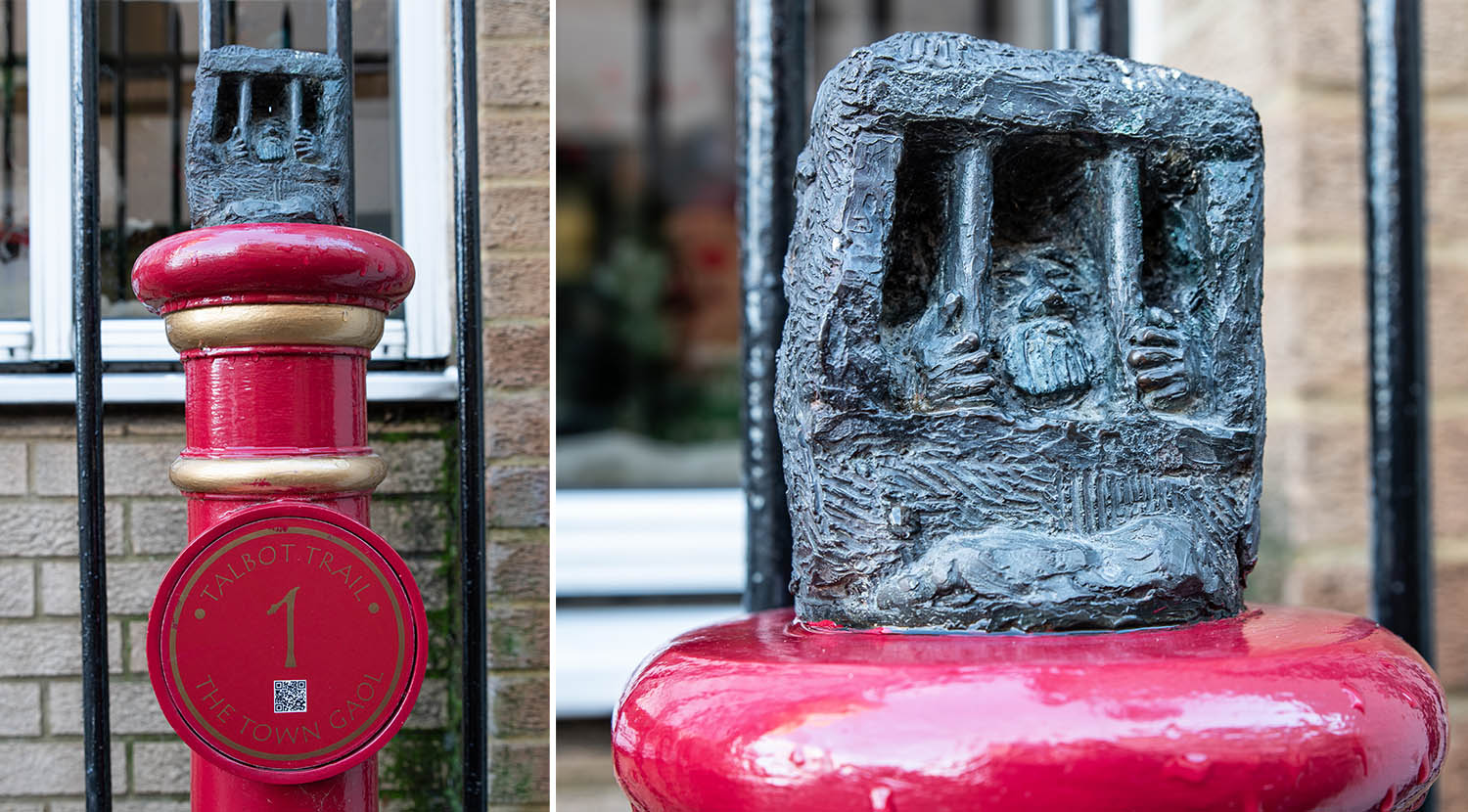
2. 101 Dalmatians
From the second statue on the Talbot Trail just outside The Town Hall steps, cast your eyes over the road where you’ll see the drinking fountain and horse trough sitting against the railings outside St Peter’s Church.
This was the site where Pongo and Perdita stopped for water while searching for their lost puppies in 101 Dalmatians – the children’s book by Dodie Smith. (You’ll find more information in The Heritage Centre on Gaol Lane).
Take a moment to appreciate St Peter’s, a beautiful Grade I listed building with a wealth of heritage, dating back to the 14th Century. St Peter’s is now a thriving cultural centre, hosting a year round programme of events.
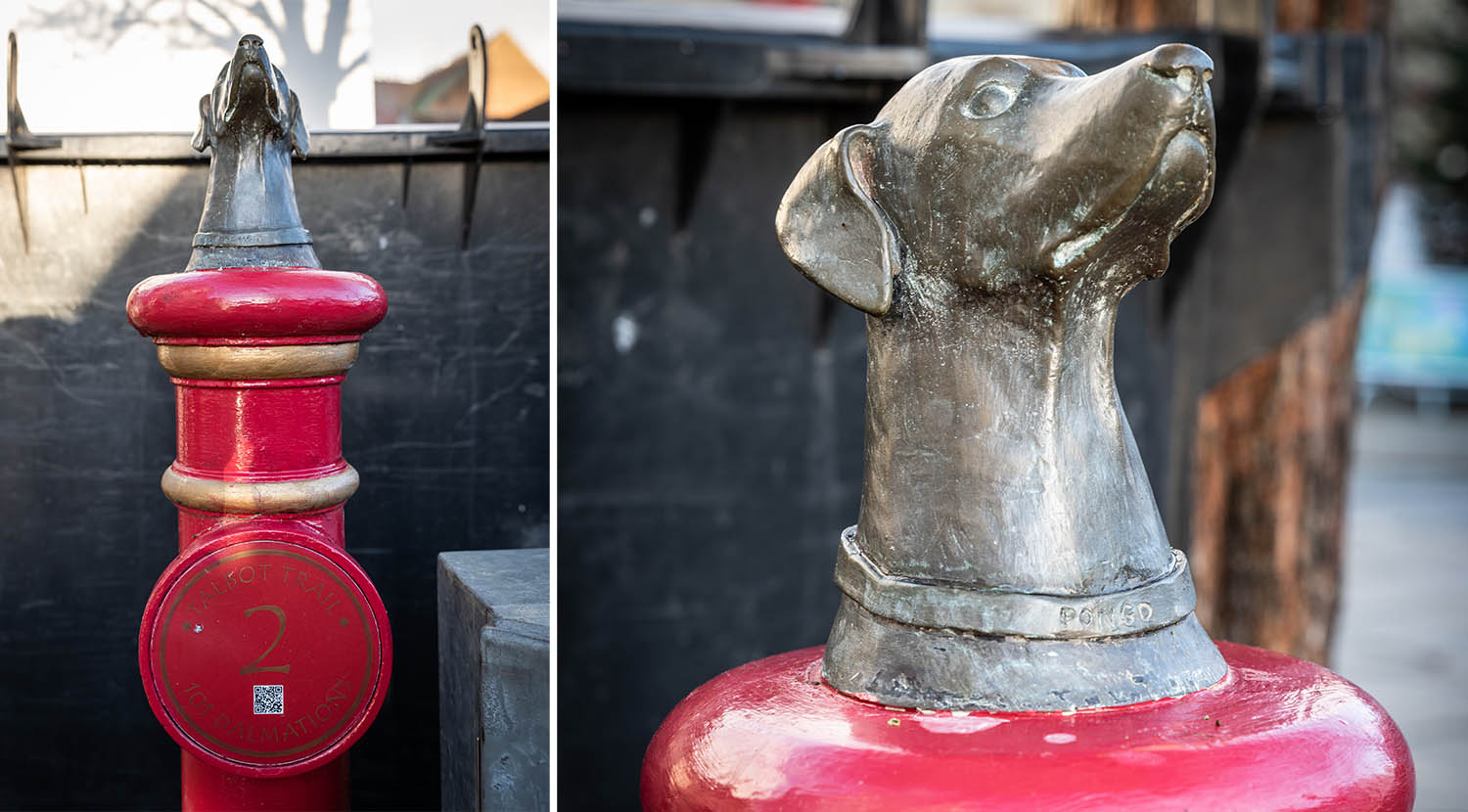
3. Boudicea
On King Street you’ll find the 3rd Talbot statue of the fearsome Boudicea. The Queen of the Iceni, Boudicea, is likely to have gained the support of the Trinovante at Sudbury in AD 44 on her way to rout the Roman garrison at Colchester with the intention of burning the town to the ground.
Sudbury is thought to have been a Trinovante stronghold in those days and evidence suggests the Trinovante tribes supported the neighbouring Iceni.
Did Boudicea pass through Sudbury? We don’t know for sure, but she would’ve certainly been close by as she expanded her troops!
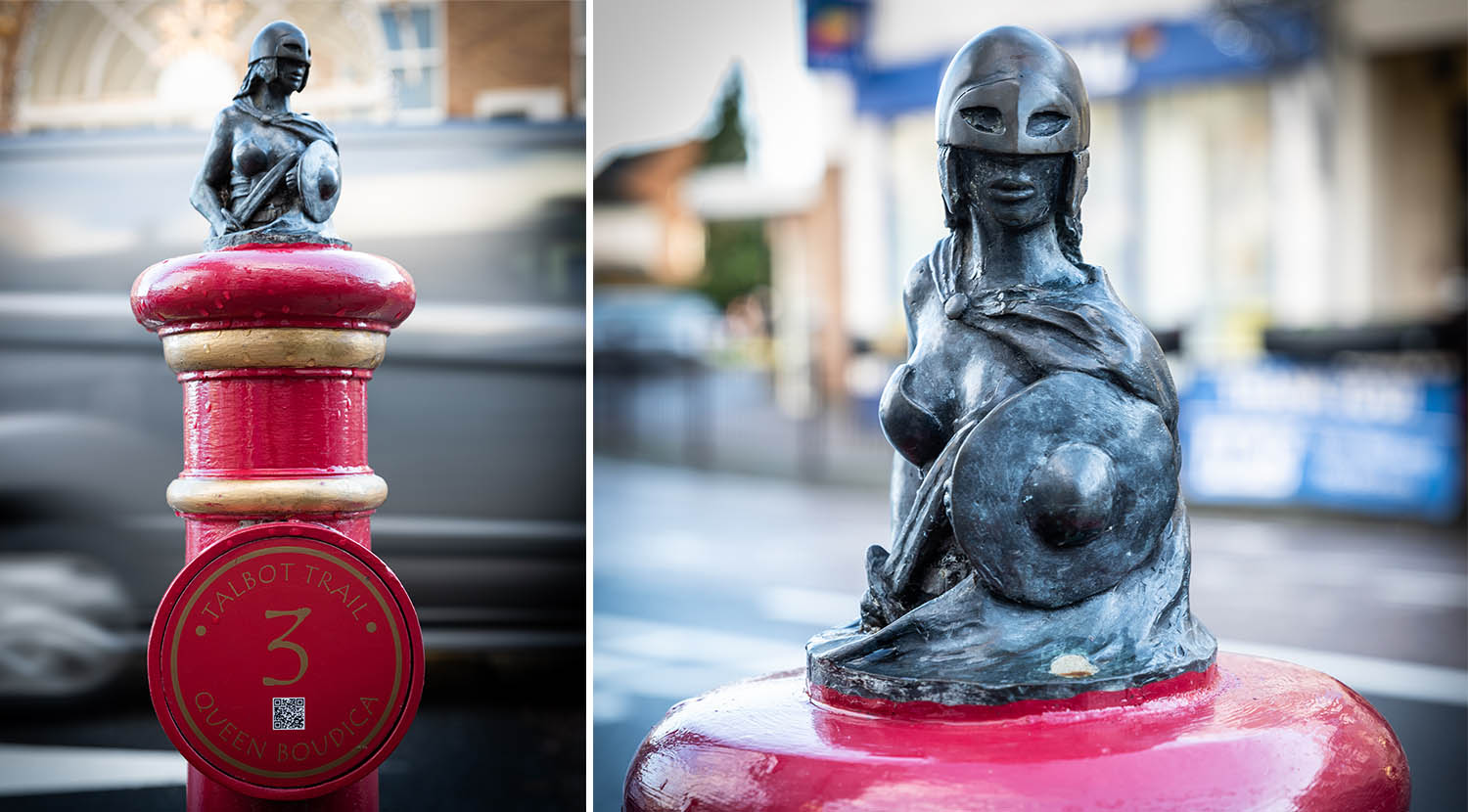
4. The Rotten Borough
Just outside The Lady Elizabeth Hotel & Bar (there is many a pub on this trail) you’ll find statue number 4 which depicts ‘The Rotten Borough’ – the second literary reference along The Talbot Trail.
Sudbury gained a reputation for electoral corruption in the 19th century, and novelist Charles Dickens used it as the model for his ‘Eatanswill’ in The Pickwick Papers, written in 1836. In one Sudbury election, a wealthy parliamentary candidate is said to have spent £10,000 in bribing voters.
Oh dear.
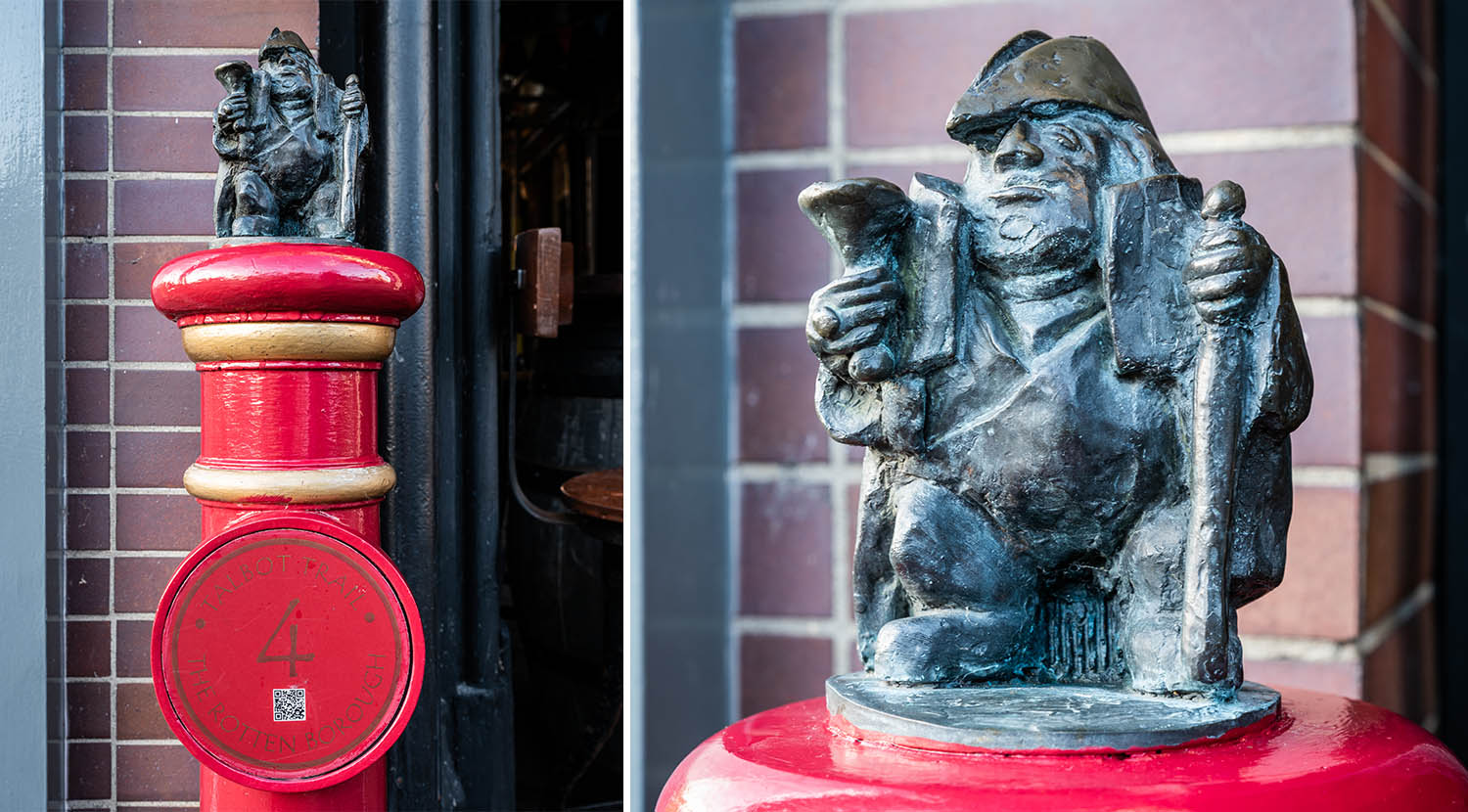
5. The Running Boy
On Gainsborough Street, near Christopher Lane you’ll find the Talbot bronze for ‘The Running Boy’ depicting a remarkable tale about a long distance runner.
In April 1879, a young apprentice named James Bigmore , ran alongside the Norwich coach, all the way from Sudbury to Norwich, a distance of 60 miles in 6 hours!
Today, this is a great street for independent cafes, shops, some wonderful listed buildings and not forgetting Gainsborough’s House just over the road – so keep your eyes peeled for blue plaques along this stretch of the trail.
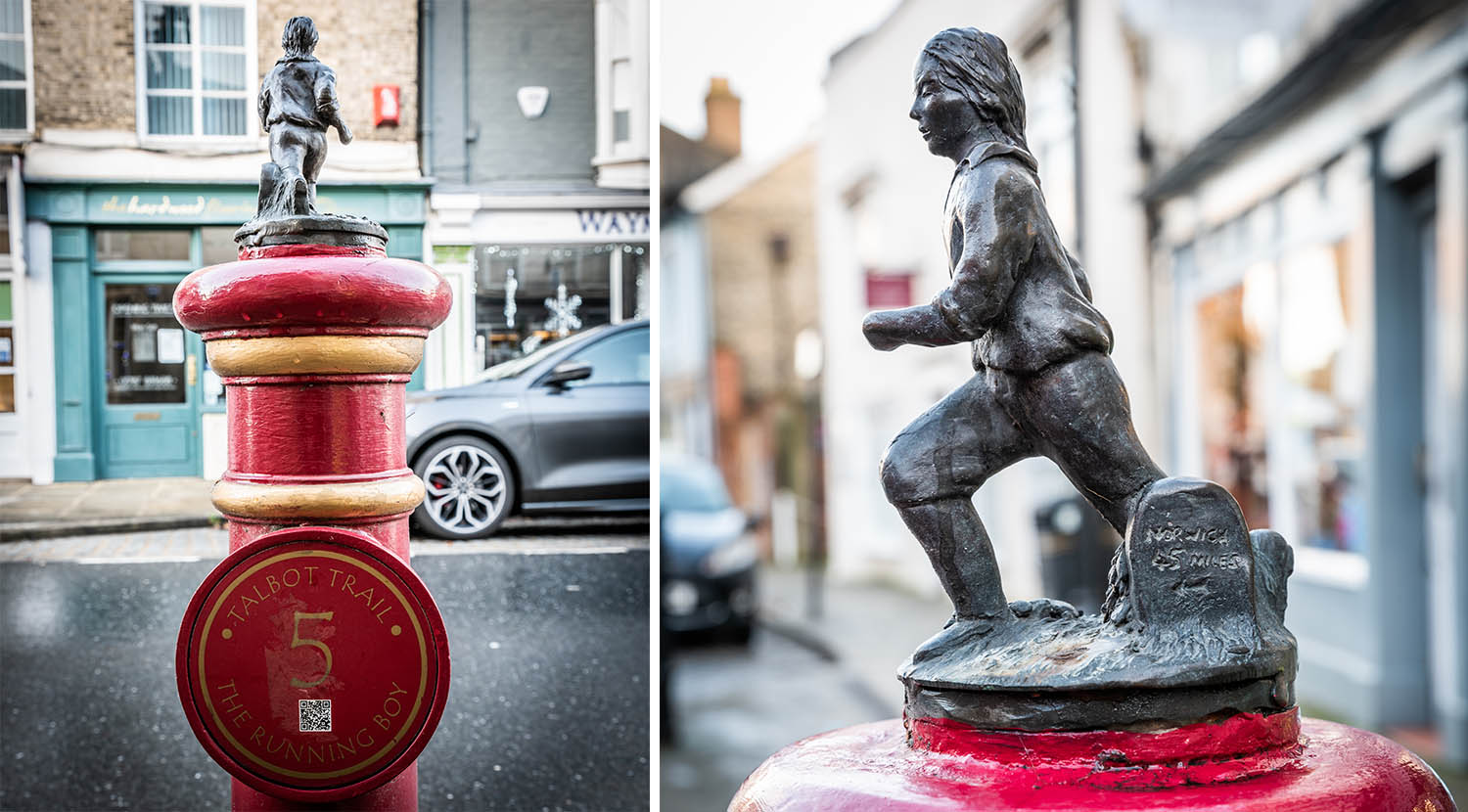
6. The Great Blondin
In 1872 this world famous high wire artist made a visit to Sudbury. On a rope suspended across the yard behind The Anchor in Friars Street (look out for the original Anchor sign as you enter Friars Street, locals fought to save it given the pub’s historical significance).
Blondin demonstrated his unique skills by pushing a member of the public across the abyss, in a wheel barrow. While exploring Friars Street remember it follows the ‘Great Ditch’, the earthwork defences erected to protect the Saxon town. Take your time on this stretch of the trail and enjoy the unique architecture, listed buildings and some quality independent eateries and shops.
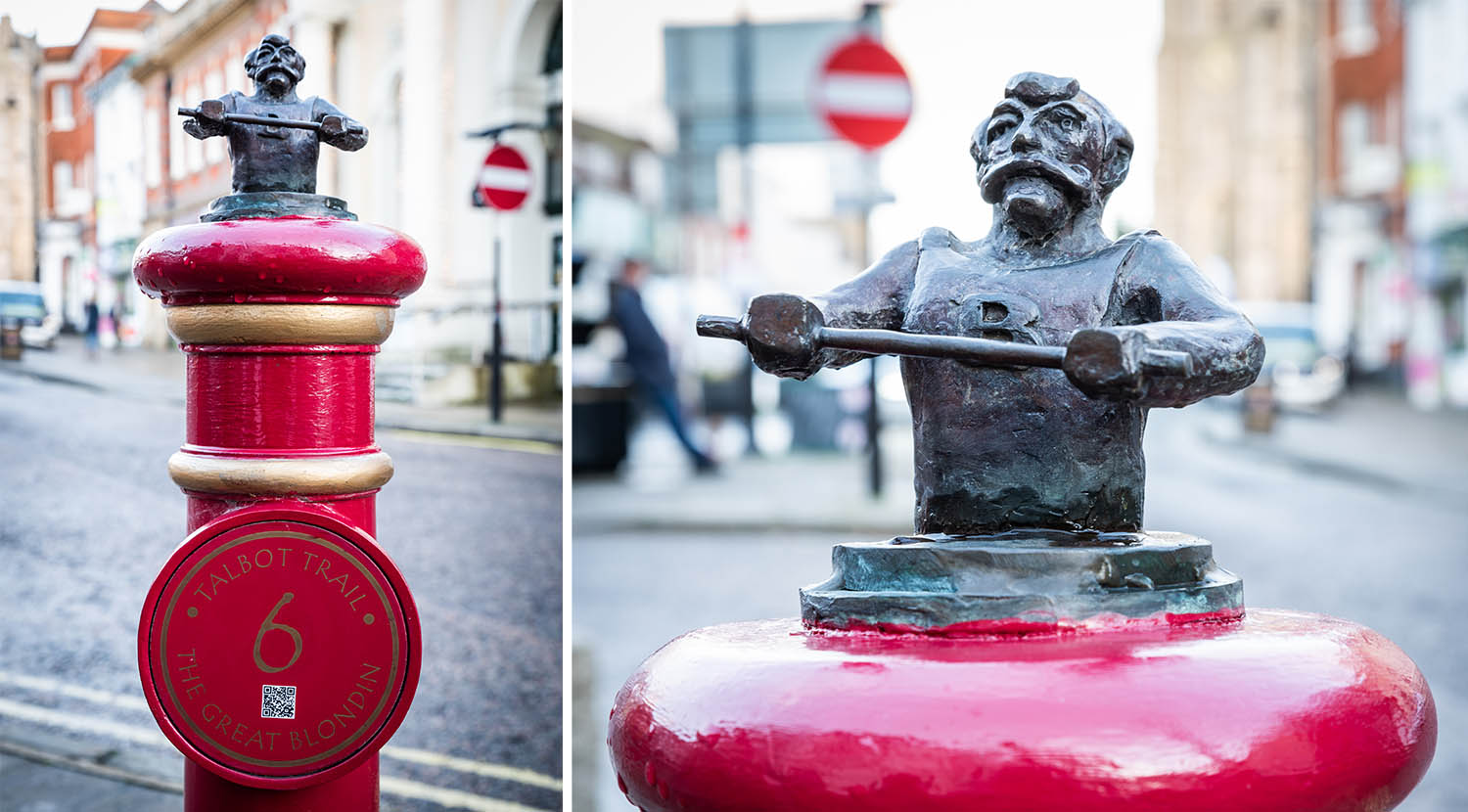
7. Mr & Mrs Gainsborough
Number 7 on the Talbot Trail marks a significant site for the artist Thomas Gainsborough (b. Sudbury 1727–1788).
In 1746 after his marriage to Margaret Burr, Gainsborough returned to Sudbury, specifically to 31a Friars Street, to work as a portrait painter for the local gentry and mercantile classes. Here his daughters were born and he painted many portraits of them before moving to Ipswich.
Gainsborough displayed an early talent for drawing and painting, spending much of his childhood sketching in the woods and fields surrounding Sudbury. It was here that his love of landscape painting first developed, a passion that would go on to become an abiding feature of his artistic career.
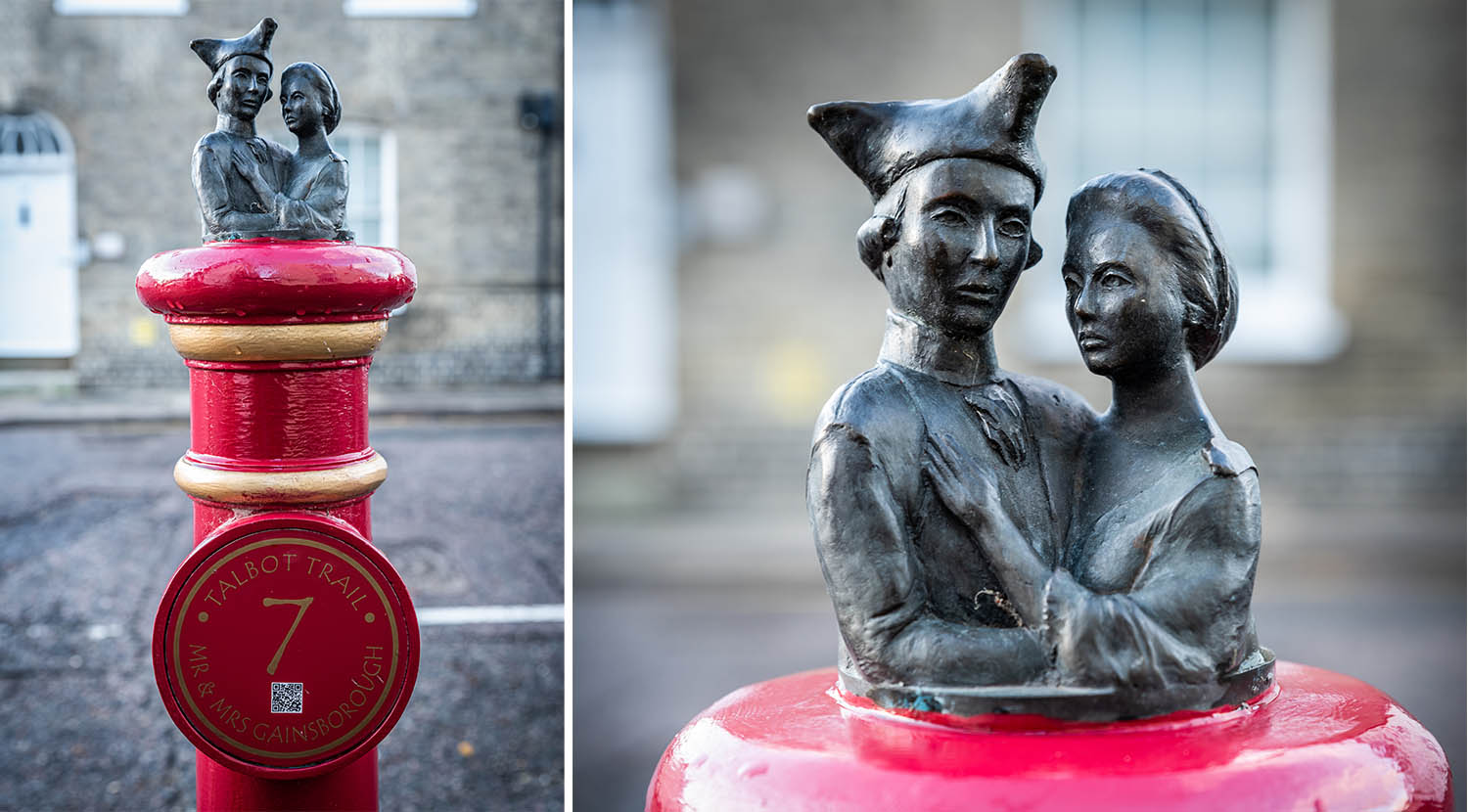
8. River Transport
Access to the North Sea and London by boat allowed Sudbury’s industries to thrive. A number of local products including wool and brick were sent by barge to London from the Quay in Quay Lane. Clay in this region produced bricks that were much sought after.
Today the site is home to The Quay Theatre with a varied arts programme. The River Stour Trust are also based here offering pleasure craft rides along the river (many of the old locks have now gone meaning only smaller craft can navigate the river).
The Gainsborough Trail Meadow Walk along the old railway line is also accessible via this point and is an excellent way to enjoy a gentle stroll along the river and Sudbury’s ancient Common Lands.
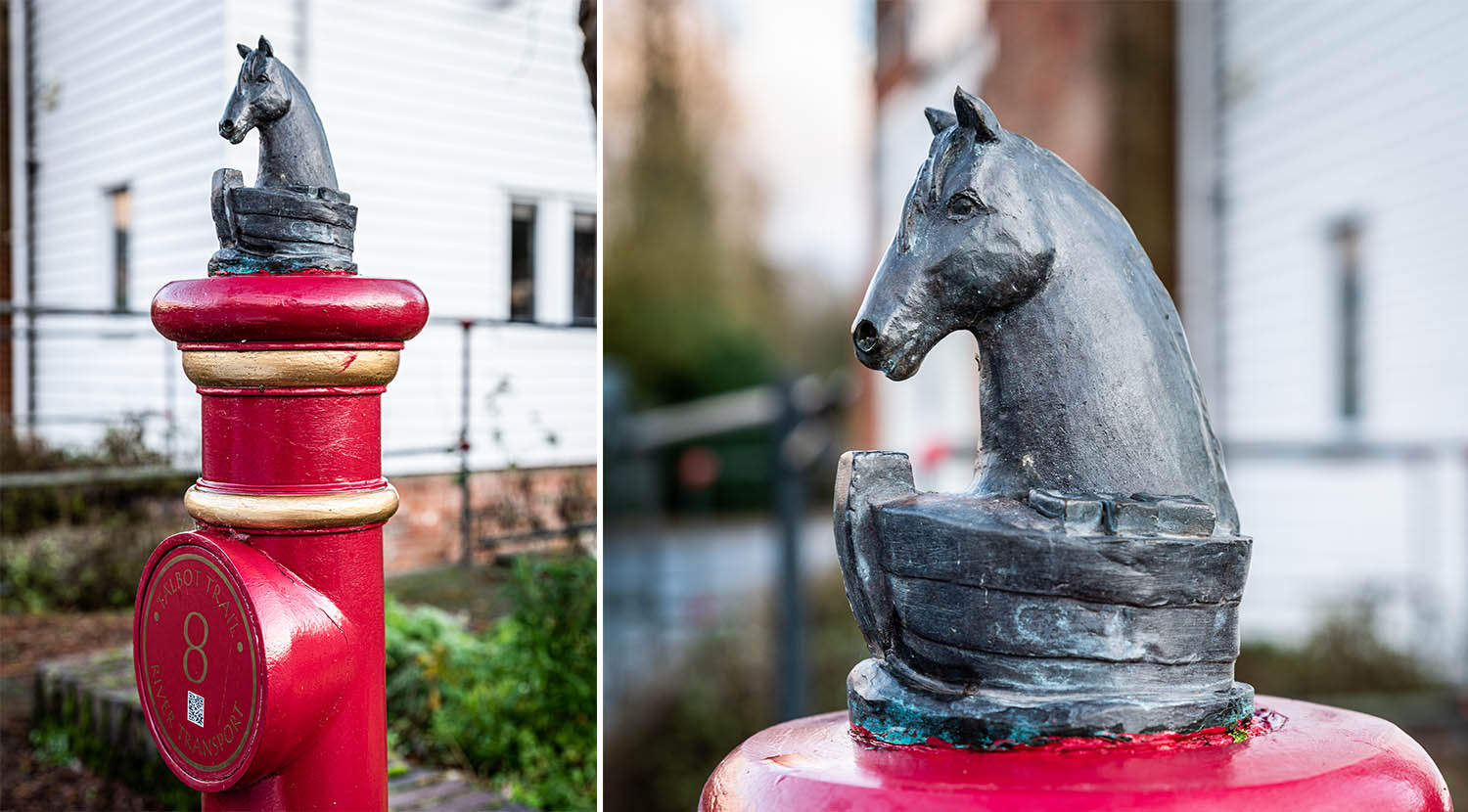
9. Dancing Bears
Where Friars Street meets Church Street you’ll find Talbot statue number 9 depicting the shameful Victorian form of street entertainment the Dancing Bears.
Bears were brought to Sudbury by Victorian showmen to entertain the local population.
The muzzled bears were taken down the passage beside 54 Church Street, opposite, where the showmen lodged in cheap accommodation at the rear. Follow Church street as it hooks around to meet Cross Street for the beautiful All Saints Church – a must see along The Talbot Trail.
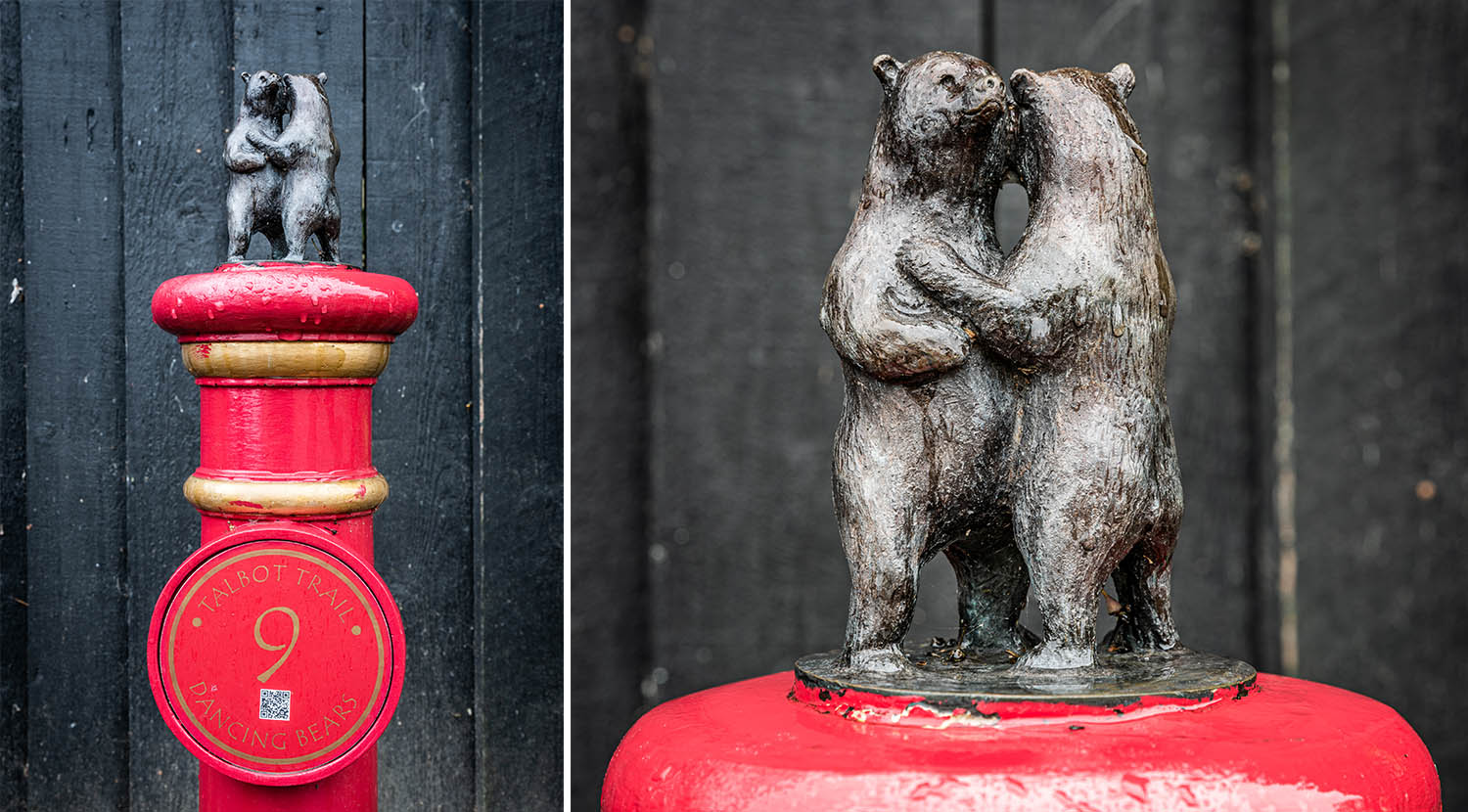
10. Amicia de Clare
Number 10 on the trail depicts Amicia, the daughter of the Earl of Gloucester, who in the 12th century, married into the powerful de Clare family and brought her wealth to Sudbury.
She founded a hospital by Ballingdon Bridge and had a new bridge constructed with stone from northern France.
Today’s Ballingdon Bridge opened in 2003, and was designed by Brookes, Stacey and Randell and built by Arup. Ballingdon was once a separate village in the County of Essex, today it is very much part of Sudbury and the only part of the town to the south of the River Stour.

11. The Water Meadows
Sudbury’s famous Water Meadows that nuzzle up to the town have been grazed continuously for a thousand years.
In 1260 Richard de Clare gave the pastures to the burgesses of the town for a rent of 40 shillings a year.
Having never been farmed, Sudbury’s Common Lands are as breathtaking as ever and remain a haven for wildlife and humans alike. On behalf of Sudbury Town Council the Common Lands are managed by The Common Lands Charity and are accessible for all to enjoy year round.
Both the Stour Valley Path and The St Edmunds way pass through this beautiful landscape that has inspired some of the world’s most celebrated artists, among them Sudbury’s very own Thomas Gainsborough.

12. The Peasants’ Revolt
As Chancellor it was Simon of Sudbury’s job to support the king and raise funds for the war with France. He made every person over 15 pay a Poll Tax, something the poor bitterly resented. A rebellion in 1381 resulted in Simon being decapitated by an angry mob.
In the vestry of St Gregory’s is the head of Simon of Sudbury who was executed in this Peasants’ Revolt.
There is a comprehensive display at Sudbury’s Heritage Centre of this gory episode of local history if you have a penchant for the macabre. Our monthly guided walk ‘Step into The Sudbury Story’ includes a rare viewing of Simon’s head at St Greogory’s.

13. Simon of Sudbury
Simon Theobold, achieved fame by becoming Archbishop of Canterbury and Chancellor of the Exchequer.
He used his wealth to establish a college for priests in Sudbury at the end of the 14th century.
All that remains is the gate to the college standing in St Gregory’s churchyard. St. Gregory’s Church stands majestically in sight here and is a significant part of Sudbury’s history.
St Gregory’s Church was named after Gregory the Great who was Pope from 590 – 604 AD and the first account of a church can be found in two wills dated 970 and 993.

14. William Kemp’s Jig
The final bronze on this trail marks a site in Sudbury where Will Kemp, an Elizabethan actor (and somewhat of a clown by all accounts) jigged his way from London to Norwich.
On the fifth day of this spectacle Kemp passed through Sudbury meeting many friendly locals on route including a Sudbury Milk maid who joined him all the way to Long Melford.
The full account of this incredible spectacle that took place in Spring 1599 is known as ‘Kemp’s nine daies wonder’. Will Kemp was known to be purveyor of “mad jests and merry jigs” and with Shakespeare was in the Company of the Lord Chamberlain’s Men. It is probable that many of the Bard’s comic roles were written with Kemp in mind.

Photography & Artwork
Photos taken by photographer Bill Hiskett. We have permission to use the above photographs but these photographs are subject to copyright and cannot be used without the photographers prior consent.
The ‘Talbot Trail’ bronzes were sculpted by Rob Pewsey and Robin Drury.
Artwork by Robin Drury.
